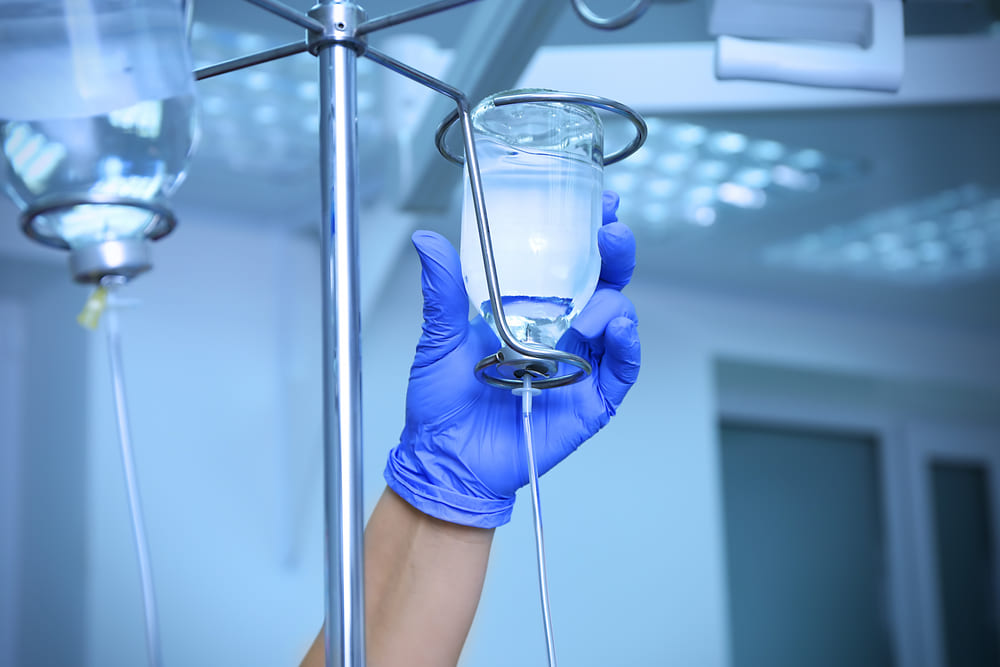Mental health disorders, such as depression, are incredibly common, affecting millions of people worldwide. According to the World Health Organization, over 300 million people suffer from depression. If not treated, depression can lead to severe physical and psychological impairments. Fortunately, there are now treatments available such as transcranial magnetic stimulation (TMS) and Ketamine that have been proven to help those suffering from depression. But which one is the best when it comes to treating the disorder? This article will explore the differences between TMS vs Ketamine and determine which is more effective for treating depression.
How does TMS for depression work?
TMS is a therapy that uses magnetic fields to refresh nerve cells in the brain. It is a relatively new form of treatment for depression, but it has been found to be highly effective in treating depression and other mental health disorders.
TMS sends magnetic pulses to the part of the brain that controls mood. These pulses stimulate neurons in the brain, which can improve mood and reduce symptoms of depression. TMS is typically done on an outpatient basis, and the treatment can be tailored to the individual patient.
During a TMS session, a patient is seated in a comfortable chair, and a transcranial magnetic stimulator is placed near the head. The stimulator sends magnetic pulses that pass through the skull and stimulate neurons in the brain.
What is ketamine infusion therapy?
Ketamine infusion therapy is a potential treatment for people who suffer from depression or other mental health conditions. It is a form of intravenous therapy that involves the administration of an anesthetic drug, Ketamine, directly into the bloodstream. This type of therapy was first developed in the 1960s as an anesthetic for surgical procedures but has recently been explored as a potential treatment for depression due to its unique effects on the brain.

How does Ketamine infusion therapy for depression work?
Ketamine works differently than other antidepressant medications, targeting glutamate, a neurotransmitter believed to play a role in depression. It works quickly and can provide relief from depressive symptoms within hours. This is in contrast to traditional antidepressants, which can take weeks or months to show any effect. Ketamine also affects other neurotransmitters, such as dopamine and norepinephrine, which are thought to be involved in mood regulation.
TMS Vs Ketamine therapy
Treatment course time
Ketamine is a dissociative anesthetic that can be used to treat depression, anxiety, PTSD, and other mental health conditions. It is typically administered intravenously, and its effects usually last several hours. The course of treatment typically involves two to three weekly sessions for three to four weeks.
Each session typically lasts about 40 minutes, with the initial session lasting up to 70 minutes. The length of the sessions and the course of treatment may vary depending on the individual’s response to the treatment.
TMS is a non-invasive treatment that requires no anesthesia or sedation. The typical course of treatment involves five or more daily sessions for two to four weeks. The length of each session is typically 30-60 minutes.
Feelings during the session
As mentioned earlier, TMS and Ketamine have been used to treat depression and anxiety. While the effects of both treatments may be similar, the experience of each treatment is different.
TMS involves the application of a strong magnetic field to the scalp, stimulating nerve cells in the brain. During a TMS session, patients may feel a tapping sensation on the scalp, which is usually well-tolerated and does not cause discomfort. Patients may also experience a tingling sensation in the area being stimulated. In general, the experience of TMS is relatively pleasant, and patients do not report any significant discomfort.
Ketamine, on the other hand, is an intravenous drug that is used to treat depression and anxiety. During a ketamine session, patients may experience several effects, including changes in perception, mood, and thought patterns. Patients may also experience a feeling of detachment from the environment and an altered sense of time and space. The effects of Ketamine can range from pleasant to unpleasant and can last anywhere from a few minutes to hours.
FDA approvals
FDA approvals are an essential factor to consider when comparing two treatments. TMS is a treatment option approved by the FDA for treating major depression in adults who haven’t responded to at least one antidepressant medication. It involves using a magnetic field to stimulate the brain’s nerve cells and has been studied for its potential to curb symptoms of depression.
Ketamine, on the other hand, is a medication that is approved by the FDA for use as an anesthetic but has recently been studied for its potential to treat depression. It works by blocking certain receptors in the brain, which can lead to improved mood and reduced symptoms of depression. However, unlike TMS, Ketamine is not yet FDA-approved for treating depression. While there have been promising results from clinical trials, more research is needed before it can be approved.
Effectiveness
When it comes to TMS, the treatment is non-invasive and is highly successful in treating mental health conditions such as depression. It uses a magnetic field to stimulate brain areas linked to mood regulation. Studies have shown that TMS can be effective in relieving symptoms of depression, with some patients reporting improvement in symptoms after just one session. It is generally a safe treatment option with few side effects.

Ketamine, on the other hand, is an anesthetic that is effective in treating mental health conditions such as depression, anxiety, and PTSD. It works by blocking certain receptors in the brain that are responsible for mood regulation. While it is effective in treating symptoms of mental health conditions, it is generally more invasive than TMS and can have more severe side effects. Additionally, the effects of Ketamine are often short-term, requiring more frequent treatments to maintain symptom relief.
Overall, both TMS and Ketamine can effectively treat mental health conditions such as depression, but the effectiveness and safety of each treatment depend on the individual.
Risks
Ketamine and TMS both have some risks associated with their use for depression, but the risks differ for each treatment.
TMS is a safe and non-invasive treatment for depression, with very few risks associated with its use. The known side effect of TMS is a mild to moderate headache. Other commonly reported side effects include scalp discomfort, tingling, or lightheadedness. Rarely, patients may experience seizure-like activity or mania.
Ketamine has a higher risk of side effects than TMS. Common side effects of Ketamine include drowsiness, dizziness, confusion, nausea, vomiting, increased blood pressure, and increased heart rate. More severe side effects, such as increased anxiety, delirium, and dissociative symptoms, can also occur. In rare cases, Ketamine can cause serious side effects such as liver damage, heart attack, or stroke.
Insurance
When it comes to insurance coverage for depression treatment, TMS and Ketamine have different levels of coverage. TMS is often covered by private insurance and Medicare, whereas Ketamine is usually not covered. This means that those with private insurance will typically have an easier time accessing TMS treatment than those with Medicare.
Ketamine is often not covered by insurance because of its higher cost and the lack of long-term data on its effectiveness. However, some insurance companies are beginning to offer coverage for Ketamine treatment, although it is still not widely available. In addition, several clinics offer Ketamine treatments on a cash-pay basis. This may be the best option for those without insurance coverage for either treatment.
Combining with other medications
When it comes to combining TMS and Ketamine with other medications for depression, there are a few key differences. TMS is typically used with selective serotonin reuptake inhibitors (SSRIs) and other antidepressants, and it can be used as an adjunct to these medications to enhance their effectiveness.

In contrast, Ketamine is usually used as a stand-alone medication and is not usually combined with other medicines. It can, however, be combined with other medications, such as benzodiazepines, to increase its efficacy.
Conclusion
TMS or ketamine, which one is better? It ultimately depends on the individual, as each treatment has its risks and benefits. TMS is a non-invasive, FDA-approved treatment that has been found to be highly successful in treating depression and other mental health disorders. It is typically covered by private insurance and Medicare and can be used with other medications. Ketamine, on the other hand, is an anesthetic that has been found to be effective in treating depression, but it is not yet approved by the FDA and is not covered by most insurance companies. It is typically used as a stand-alone medication but can be combined with other medicines to increase its effectiveness. Ultimately, when it comes to TMS vs ketamine for depression, the choice should be based on the individual’s needs, preferences, and risk profile.
